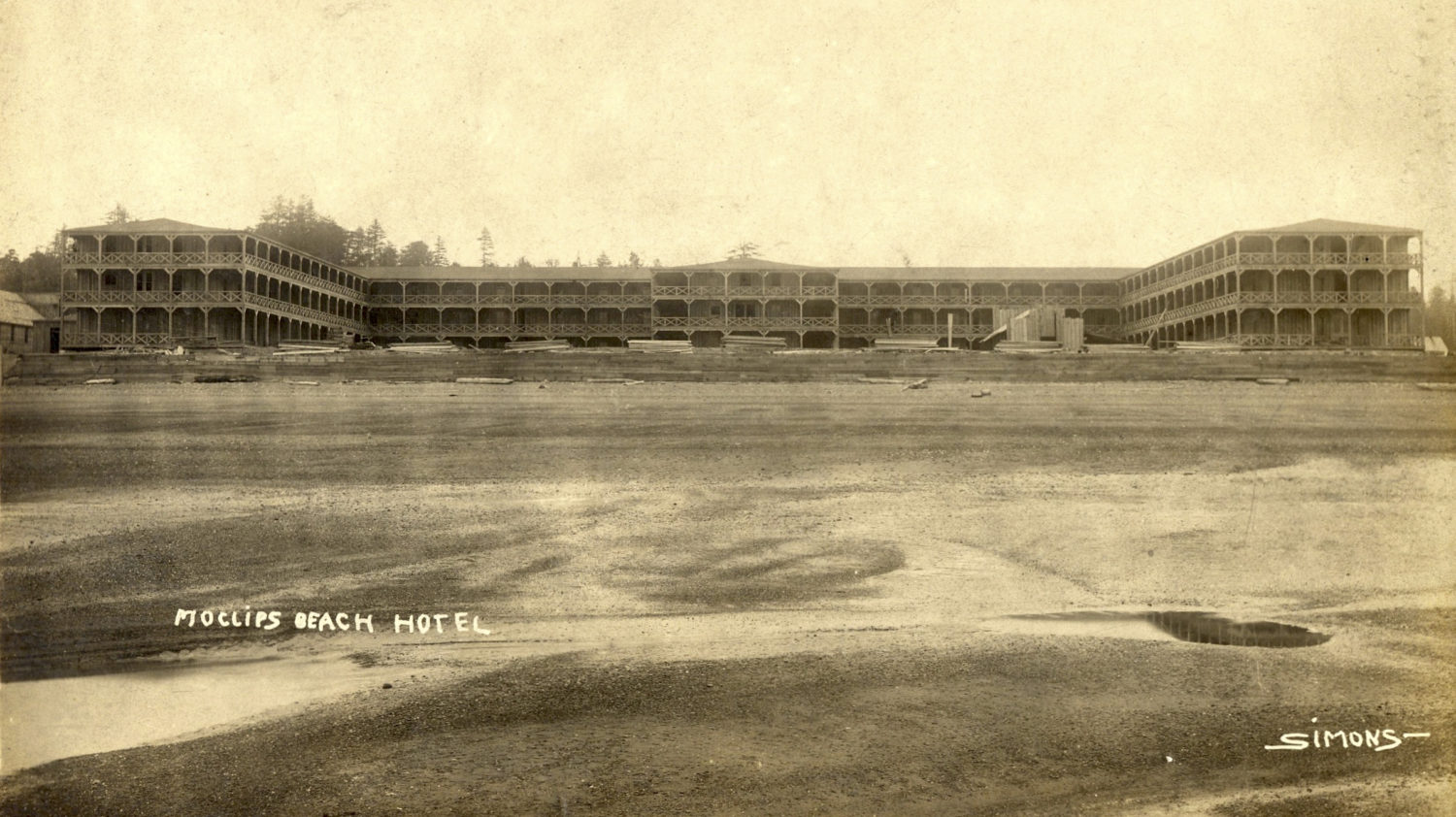
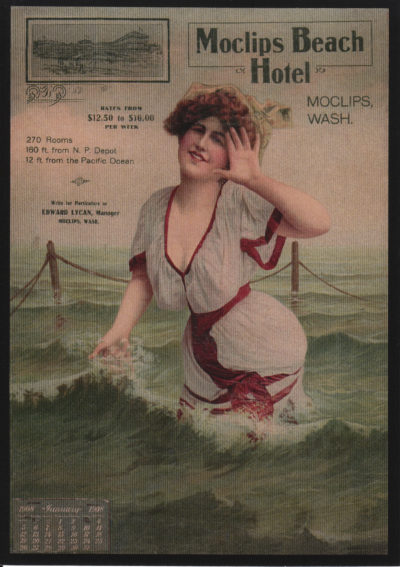 The 1908 poster for the Moclips Beach Hotel featured a buxom bathing beauty rising from the ocean waves, promoting the remote seaside destination as a resort for health and pleasure.
The 1908 poster for the Moclips Beach Hotel featured a buxom bathing beauty rising from the ocean waves, promoting the remote seaside destination as a resort for health and pleasure.
The fanciful image captured the colorful ambition and vision of maverick Dr. Edward Lycan, who invested his life’s fortune into a massive E-shaped structure that swelled to more than 300 rooms, built just 12 feet from the beach. Rates were $12.50 to $16 per week. In its second iteration (the first, more modest hotel was beset by fire), the Moclips Beach Hotel for a few short years was said to be the biggest hotel on the West Coast.
“The Moclips Beach Hotel has no equal on the Pacific Coast north of San Francisco in the line of a summer resort hotel,” said the Moclips Ocean Wave in one of the first newspaper accounts.
A 1909 brochure for the hotel declared: “Moclips is sure to soon become the Mecca for health and pleasure of the Northwest, of people who love the ocean, as here it is never too hot nor too cold, too wet nor too dry, but just right, and is preferable in every way to the dry, dusty changeable climate of California.”
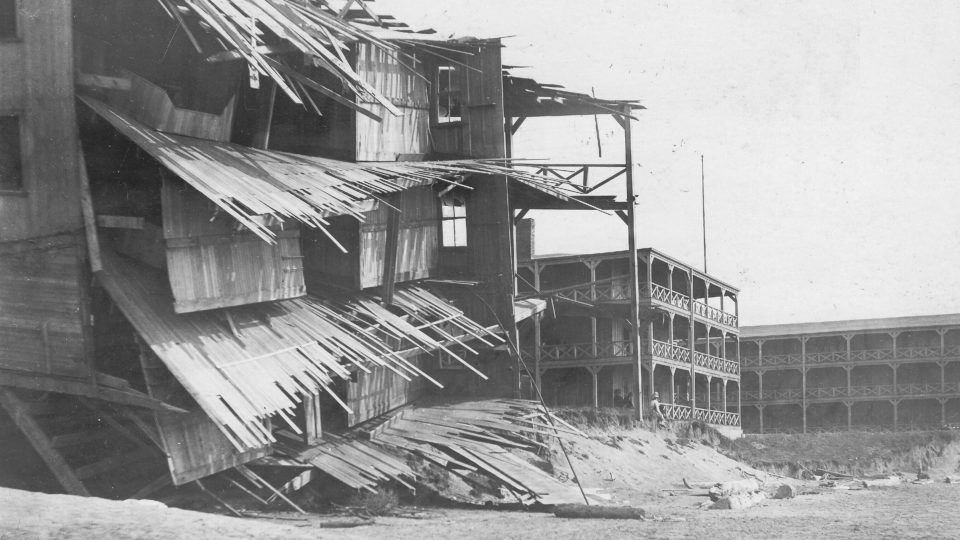 Two years later, however, everything would change. From Feb. 11-13 1911, a series of storms came crashing through, despite efforts to stop a break in a 10-foot seawall, eventually reducing the fabled structure to a shell.
Two years later, however, everything would change. From Feb. 11-13 1911, a series of storms came crashing through, despite efforts to stop a break in a 10-foot seawall, eventually reducing the fabled structure to a shell.
“Windows and doors have been taken from a large part of the building, and the remaining part of the structure stands, hollow and wrecked, looking like a deserted castle of some feudal chief,” said the Grays Harbor Washingtonian on Feb. 15, 1911.
The story of the hotel lives on thanks in large part to the descendants of Dr. Lycan, interested visitors over the years, several oral and written histories and an ongoing collection at the Museum of the North Beach. In many ways, it marks the heyday of life at the turn of the 20th Century on the West Coast, with the physician-turned real estate investor Lycan dreaming of building a new resort that could rival those he had visited in Hawaii, California and Mexico during his earlier travels.
On a rainy, stormy afternoon this fall, Lycan’s granddaughter Eleanor Lycan Ward met with Kelly Calhoun and Lee Marriott of the Museum of the North Beach to go through some of the history and artifacts that tell the story of a time when Moclips seemed to be the center of development along the Washington Coast.
Much of the development was spurred by the Northern Pacific Railroad extension that brought train service from Hoquiam. The hotel sat at the end of what is now Pacific Avenue in Moclips, only a short distance from the old Northern Pacific depot.
Calhoun notes that the first storm to hit the hotel happened in 1911, followed by another storm in December 1913 that took out the middle wing. Another storm in January 1914 destroyed the rest.
Dr. Lycan died in Tenino at 67 just after Christmas in 1912, less than a year after that first series of storms and what was left of the hotel fell into the hands of Robert Chabot, known as the founder of Moclips.
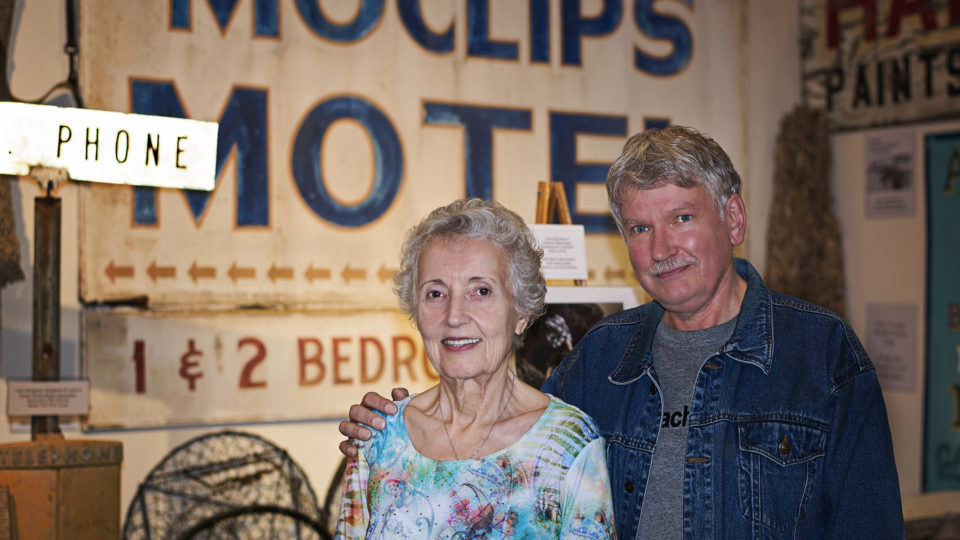
Eleanor’s grandfather died before she was born, but she often came to visit Moclips, and the family still has property there.
“Grandpa Lycan was married three times,” Eleanor notes, telling the story of how the well-travelled patriarch of the family ended up in Moclips running a giant hotel.
He joined the Union Army during the Civil War and likely became driven to be a physician by necessity more than anything.
“We’re not really sure when or where he became a doctor,” Eleanor acknowledges. Most likely, it was in Chicago after the end of the war.
A more exact history of Dr. Lycan was prepared in 2005 by Gail Gage for the Moclips Centennial project.
“He left home at 15 to join the Civil War, was returned home at the request of his father, and again left home, never to return, and rejoined the Civil War effort. At age 30 he married Eva Shaw of Boone, Iowa. He was educated as a doctor of medicine in Chicago, Illinois. He also had an extensive business background before this (Moclips Beach Hotel) project. He jointly owned a high-end home furnishings business (that sold pianos among other things) in Hawaii. He was asked to set up a sugar cane mill in Mexico. He arrived on the Harbor first to manage the Pomona Hotel in Aberdeen in the late 1880s.”
“He was multidisciplined and respected in the business community,” Gage wrote. “A November 1905 article stated he was ‘one of the best known and most successful hotel men of the state.’”
Lycan is said to have come West when he left his first wife to be with his second wife, only to be chased by the father of bride-to-be No. 2. They intended to take a train to the East, when the couple spotted the father and boarded a train to the West instead.
“It sounds too theatrical to be true, but that’s how they came out West,” Eleanor laughs. “Her father was after them.”
When the Northern Pacific Railroad decided to build a spur from Hoquiam to Moclips, Lycan linked up to the effort by announcing he would build a new resort hotel just 160 feet from the Northern Pacific Depot at the beach in Moclips.
“If the Northern Pacific hadn’t come out here, it wouldn’t have been what it was, that’s for sure,” Marriott said. “This was the farthest reaches of the Olympic Peninsula, and nobody before then really had a way to get out here.”
Gage explains, “During this time in history, many coastal resorts emerged due to the railways. It paid for them to invest in resorts to provide a destination for paying rail travelers.”
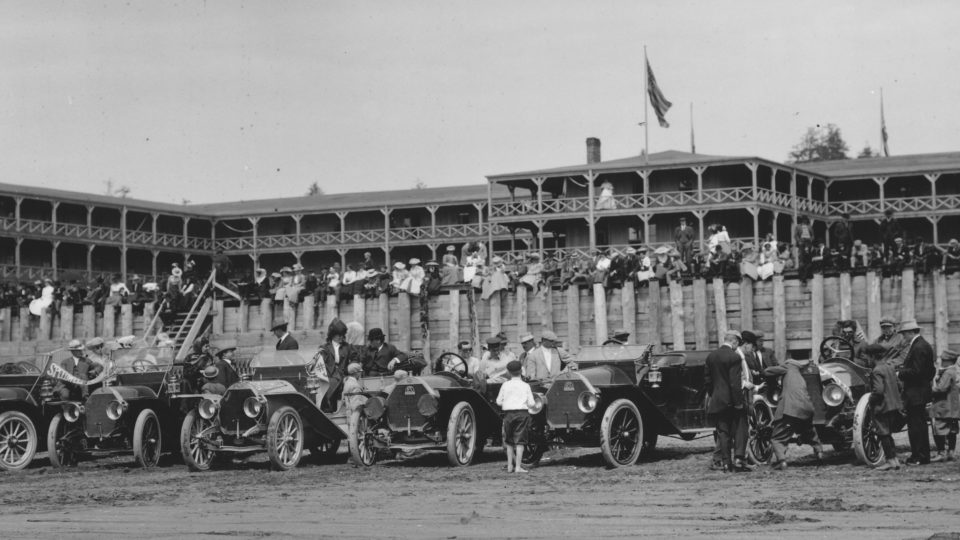
The first version of the hotel was built in 1905 and was more modest, at just two stories and 150 rooms, and 36 feet from the ocean. “Just four months after it opened, a towering inferno swept the hotel and it was closed for more than a year,” said a story in the The Daily World on the history of the Lycan family.
The cause of the fire was never determined — possibly a chimney fire — but Lycan was determined to rebuild and make his dream even bigger — and closer to the ocean.
“They doubled the size and went from an L-shape to an E-shape,” Eleanor said.
Some of the artifacts maintained by the Museum of the North Beach include a Seth Thomas clock, a mirror, original poster and brochure, and unique items such as a whale shoulder blade that once adorned the fireplace mantel in the hotel. The museum also has a scale model of the entire facility, showing the layout of the 270 rooms that faced the ocean, with 325 rooms in all.
Calhoun, Marriott and others continue to research the developments surrounding the hotel, both its creation and demise. Several dates have been updated as well as facts about Lycan, with some stories changing over the years. Marriott notes the hotel ultimately was destroyed by a series of storms, not just a single event.
“They just kept sheering the wings off of the hotel after the storms, and kept running it,” Calhoun said.
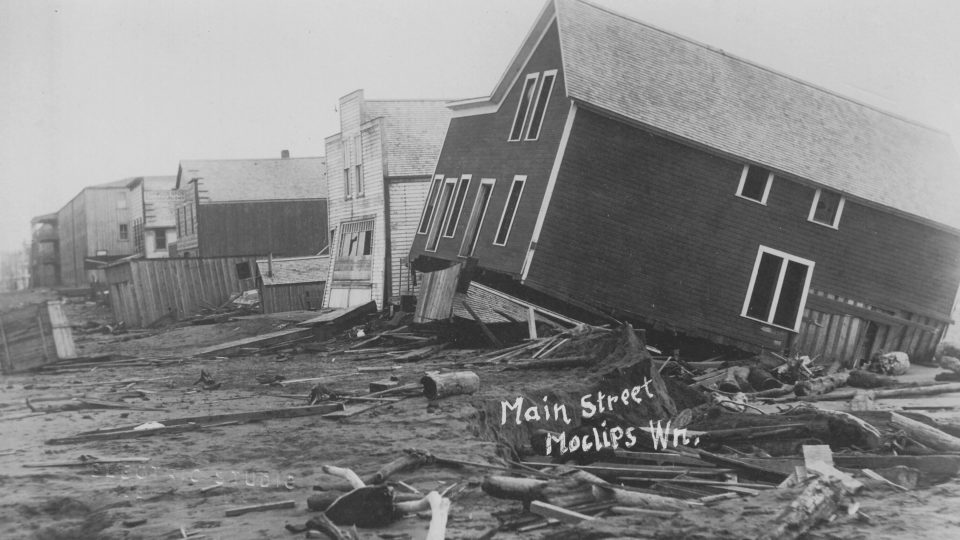 In all three storm events, the Moclips River also played a part in the hotel’s destruction as much as its proximity to the ocean, he points out. The river swelled at high tide with heavy rains, undermined the seawall and destroyed the sand dunes surrounding it.
In all three storm events, the Moclips River also played a part in the hotel’s destruction as much as its proximity to the ocean, he points out. The river swelled at high tide with heavy rains, undermined the seawall and destroyed the sand dunes surrounding it.
Eventually, what was left was uprooted and moved down the street to become the Seaview Hotel.
“Dr. Lycan left after the first storm in 1911 and went to Tenino,” Calhoun said.
“He died of a broken heart,” Marriott said.
The Lycan family in 2005 helped create a park honoring the memory, site and history of the Moclips Beach Hotel with a bronze historical marker located at the intersection of Pacific Avenue and 4th Street near the beach. The marker is called “A Broken Dream.”
The Moclips by the Sea Historical Society and Museum of the North Beach have more than a dozen artifacts from the hotel on display and a growing collection of documents and information about Dr. Lycan, the hotel and the history of Moclips. The Museum is located at 4658 State Route 109 just north of the Ocean Crest Resort in Moclips and will soon be building a new facility just to the south of the resort. Contact the museum at 360-276-4441